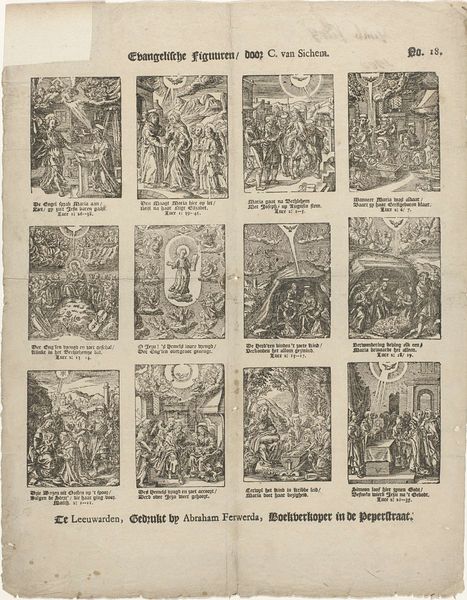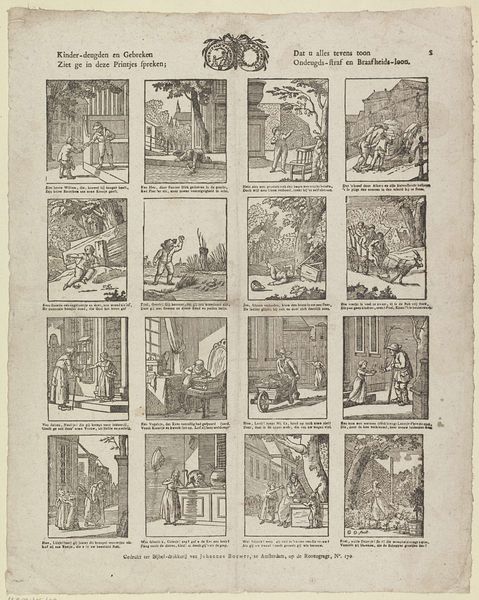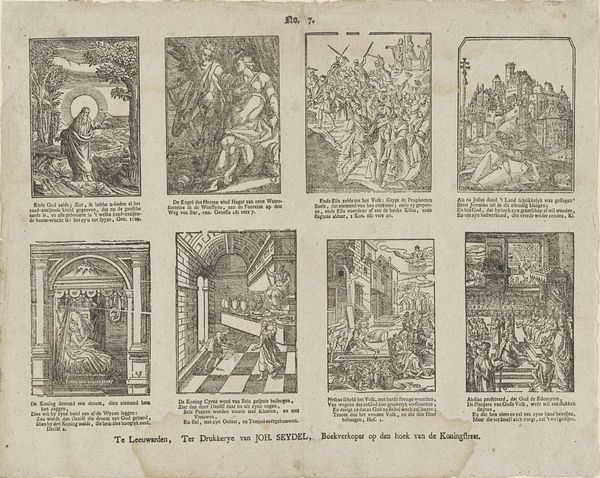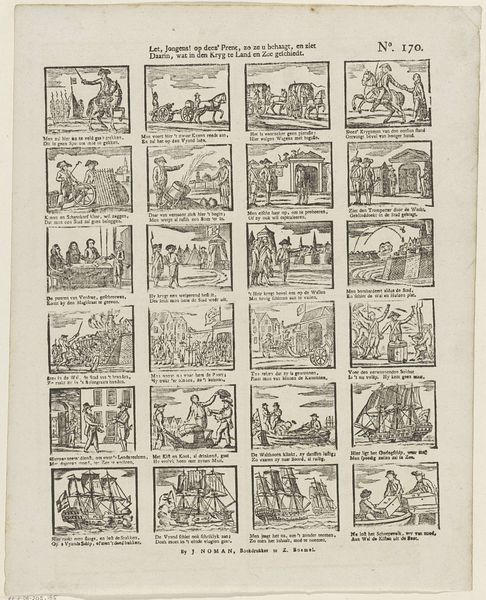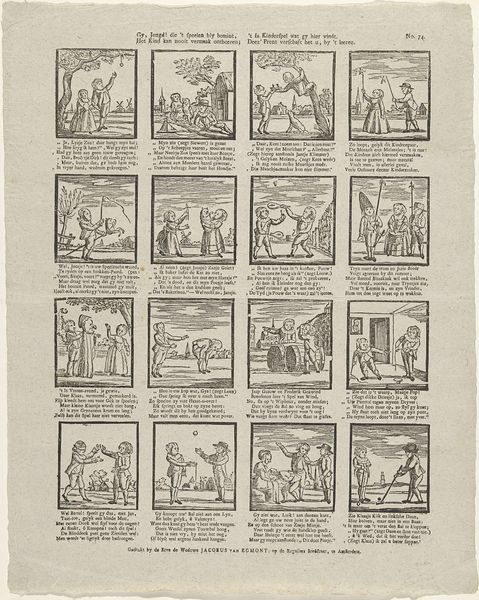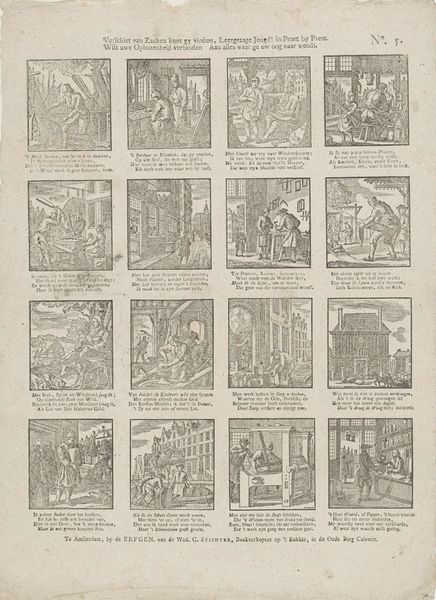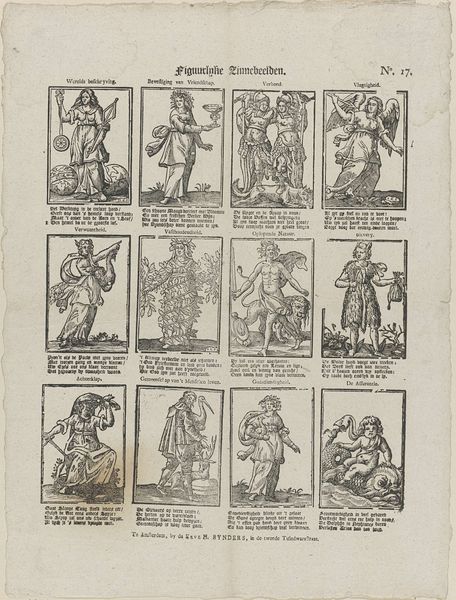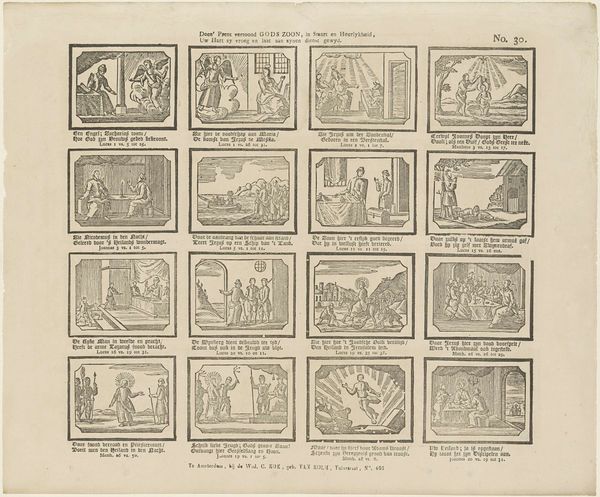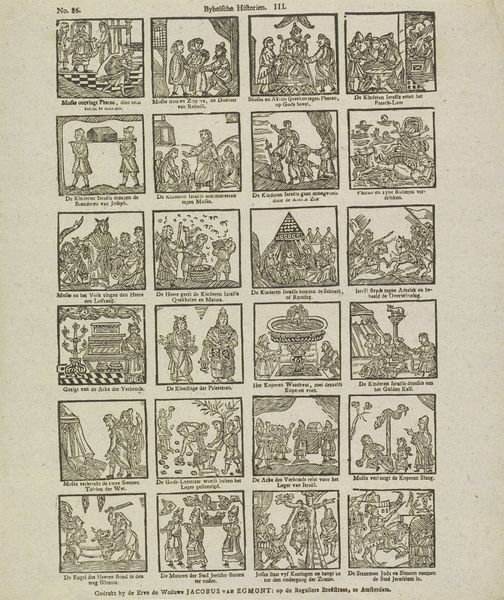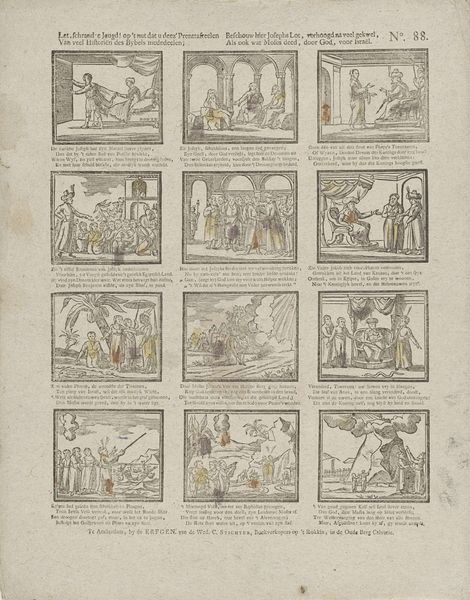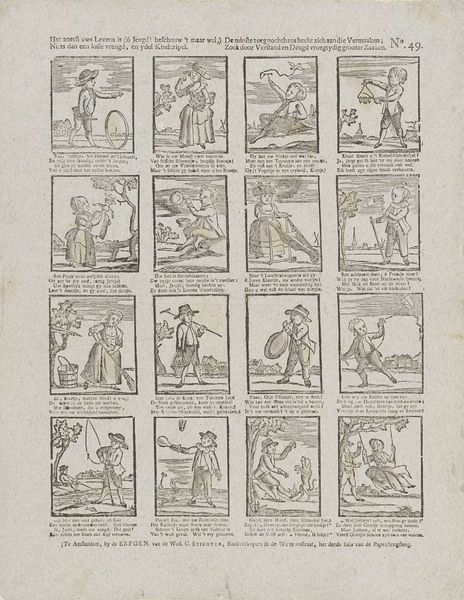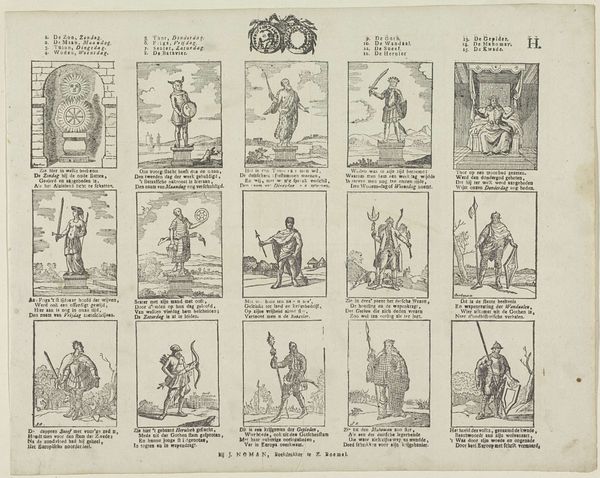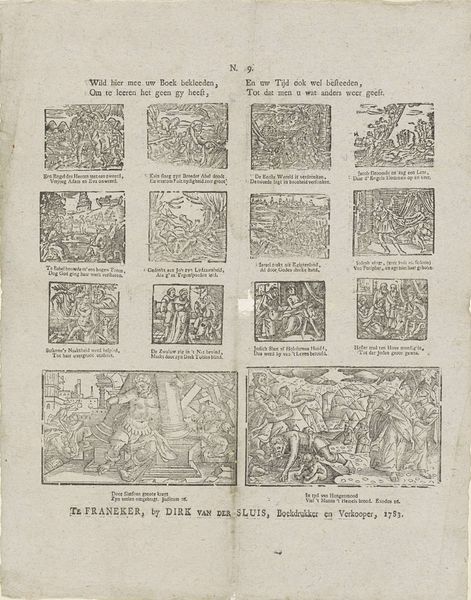
De Jeugd werd hiet gestigt / door 't Werk in tugt gehouwen / Gelijk men Daaglijksch ziet / Van 't Doopen af tot 't Trouwen 1789 - 1855
0:00
0:00
print, engraving
#
narrative-art
#
dutch-golden-age
# print
#
genre-painting
#
engraving
Dimensions: height 404 mm, width 305 mm
Copyright: Rijks Museum: Open Domain
Curator: Let’s dive into this engraving, “De Jeugd werd hiet gestigt…” Created by David du Mortier & Zoon sometime between 1789 and 1855. What jumps out at you initially? Editor: Well, there is an almost cartoon-like aspect, with all the little scenes in separate boxes. But beyond that initial observation, it's also pretty hard to know what’s going on! What do you see in this piece? Curator: The visual style definitely gives it a narrative, almost instructional, quality, right? Consider the historical context of the piece. Think about literacy rates in that period and how prints like this circulated. It was probably used as a means of disseminating particular views and values. Look at the title "Youth was established here / through Work held in discipline / as one sees Daily / From Baptism up to Marriage." What assumptions are made about how you create 'good' youths in this work? Editor: Right, I get what you are saying. Work, discipline, church...but how might a contemporary audience understand that? Curator: We might consider this through the lens of power dynamics and social control. This print visually codifies what Foucault might call a disciplinary society. The progression of images suggests a predetermined path, an enforced morality. Consider what that path excludes or marginalizes. Are there alternative perspectives on youth that are lost within this structure? How do factors such as race, class, and gender affect how discipline is expressed? Editor: This completely changes my first impression of the print. Curator: Absolutely. Examining these prints unveils how these values, these supposed paths to proper behavior, aren’t neutral but are loaded with ideology, social conditioning, and political objectives. Editor: It’s made me appreciate how important it is to question those dominant narratives, both then and now. Curator: Indeed. By interrogating the underlying assumptions of the past, we gain clarity on the systems shaping our present.
Comments
No comments
Be the first to comment and join the conversation on the ultimate creative platform.
